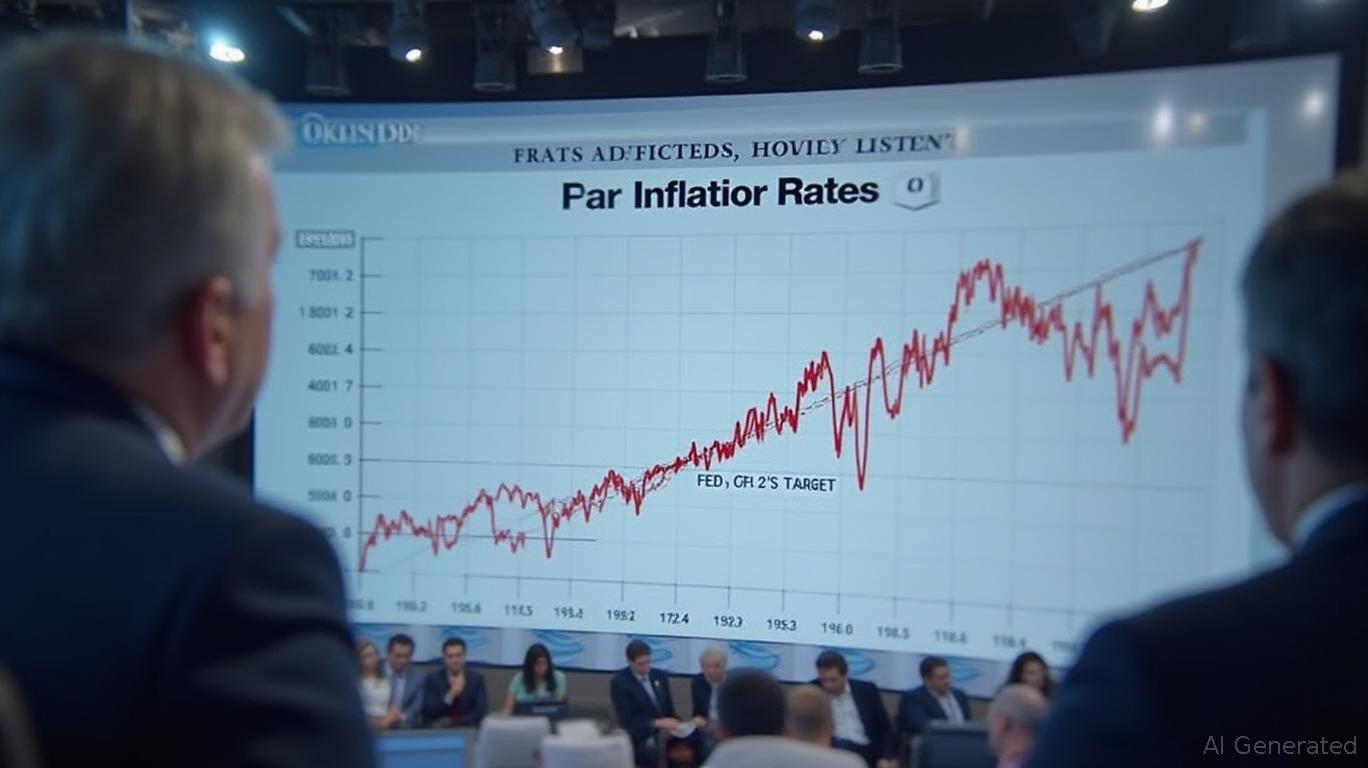The 24 Hours of Rate Cuts That End Year of Global Central-Bank Easing
Saturday, Dec 14, 2024 4:24 pm ET
As the global trend of easing core inflation stabilizes, the ongoing interest rate cycle is entering its final stages. With 2024 on the horizon, central banks worldwide are shifting their attention from actively raising interest rates to determining the right moment to initiate reductions. How can we grasp the trends in interest rates in 2024? This article will introduce five key indicators.
1. Global - Proportion of Central Bank Interest Rate Hikes & Cuts
Looking back at 2022, facing continuous inflation pressures due to supply chain constraints, the Russia-Ukraine war, and an energy crisis, central banks worldwide initiated interest rate hike cycles. By Q4 2022, the global proportion of interest rate hikes climbed to a historic high of 86%. Currently, with inflation easing in 2023, most major global central banks, such as the Fed, ECB, and BoE, have begun to pause interest rate hikes. The proportion of interest rate hikes has significantly declined, while the proportion of interest rate cuts has gradually risen to over 30%.

2. Global - Central Bank Interest Rate Hike/Cut Expectations (2024)
Observing the chart, the current expectations for interest rate hikes/cuts in 2024 for major central banks are all negative and continue to show a downward trend. This reflects a shift toward moderate economic growth. Simultaneously, with increasing risks to the financial markets and rising government interest expenses in a high-interest-rate environment, central banks worldwide have begun to consider interest rate cuts.
Based on the prices of interest rate futures, estimates are calculated with the formula: Lowest Implied Rate for 2024 Q4 - Highest Implied Rate for 2022-2023. A negative value indicates that the market expects interest rate cuts in 2024, while a positive value indicates that the market expects interest rate hikes in 2024.
3. IMF's Gita Gopinath Speaks at Davos 2024
Are interest rates coming? IMF's Gita Gopinath speaks in a panel at Davos 2024. Image: World Economic Forum
This article is part of: World Economic Forum Annual Meeting
Davos 2024, the Annual Meeting of the World Economic Forum, takes place from 15–19 January in Davos, Switzerland.
The 'High Rate Reality' session at the meeting saw the IMF and other global leaders outline what we can expect regarding interest rate cuts in 2024.
Global inflation continues to ease in 2024, as reflected in the Forum's latest Chief Economist Outlook.
Global inflation continues to ease in 2024, as reflected in the latest survey results from the Chief Economist Outlook, raising the question: what will happen with interest rates this year?
Over the last two years, central banks worldwide have made their steepest interest-rate increases in two decades to curb inflation, which remains vulnerable to shocks in commodity markets and supply chains.
While expectations for high inflation are being pared back across all regions, the high rates continue testing the resilience of economies alongside wider repercussions on the ability of individual and business borrowers to service their debt, increased pressure on global markets, and changing the nature of investment.
Will high rates become the new normal and what might a new equilibrium look like?
This was the question a session titled ‘The High Rate Reality’ was tackling at Davos 2024, the Annual Meeting of the World Economic Forum in Davos, Switzerland. Gita Gopinath, First Managing Director at International Monetary Fund (IMF), was joined by François Villeroy de Galhau, Governor of the Central Bank of France; Chuck Robbins, Chair and CEO of Cisco Systems; and Nasdaq Inc. Chair and CEO Adena Friedman, in a conversation with Steve Sedgwick, anchor at CNBC.
Rate cuts ‘likely in the second half of this year’
The IMF’s Gopinath began the session with thoughts on the ‘premature’ expectations around aggressive rate cuts.
“We still have labour markets that are relatively tight in the US, and including the Euro area. So we should expect rates to come down sometime this year. But based on the data that we’re seeing right now, we expect this to be more likely in the second half of this year,” she said.
In the longer time, she expects the average interest rates will continue to remain higher when compared to the period after the great financial crisis, in the years of 2008 and 2019. The reason? “Now we're in a world where we have far more supply shocks that are much more severe, and we've seen that inflation can come back pretty strongly,” she said.
“So we are moving to a regime where central bankers are going to be a little more cautious about running the economy hot, and also moving pre-emptively and not waiting until they see inflation go above target,” Gopinath added. “Because of those reasons, we're moving to a higher rate environment.”
Under the current scenario, the IMF views increasing chances of a 'oft landing’ as inflation comes down ‘without much of a loss in terms of economic activity’ – opposed to the 'hard landing' of a recession.
And while it may be too to declare victory on tackling inflation, Villeroy de Galhau, of the Central Bank of France, so far agrees with a soft-landing scenario for both the United States and Europe. “Bearing major surprises – we look at the Middle East – our next move will be a [rate] cut, probably this year,” he said.
4. Structural Monetary Tools in Focus Amid Fed's Hawkish Stance, Dollar Strength
China may turn more prudent about aggregate monetary easing measures such as interest rate cuts in the short term amid the continued strength of the US dollar, but beef up structural monetary support, experts said on Thursday.
That said, the country may still reduce the benchmark interest rate for mortgages slightly in the rest of the year if more stimulus is needed to consolidate the property market recovery, they said.
Their comments were in response to the US Federal Reserve's latest policy statement signaling that it may further raise interest rates and keep the rates at a very high level for a longer-than-expected period.
On Wednesday, the Fed decided to maintain the target range for the federal funds rate in the 5.25 to 5.5 percent range, in line with market expectations. What caught analysts' greater attention was the Fed's hint that it may implement another rate hike of 25 basis points by the end of the year and may cut the rates by only 50 basis points in 2024, versus 100 basis points it implied in June.
Shao Yu, chief economist at Orient Securities, said the dollar may retain its strength and weigh on other currencies as the Fed is likely to further increase interest rates and keep them high for a relatively long period to curb stubbornly high inflation.
Following the Fed's hawkish statement, the US dollar Index, which gauges the greenback's value relative to a basket of key currencies, hit a six-month high of 105.69 on Thursday. The onshore renminbi weakened to 7.3097 against the dollar on Thursday, the lowest level since Sept 11, according to market tracker Wind Info.
"China still has room for interest rate cuts as the domestic economic situation remains the key determinant in policymaking, but relative cautiousness (in policy easing) could be seen in order to balance the targets of growth stabilization and foreign exchange rate stability," Shao said.
"If the real economy recovers slower than expected, monetary and fiscal policies may still amplify counter-cyclical adjustments despite the dollar's strength."
Shao's views echoed a central bank official's pledge on Wednesday to beef up support for the economy while stabilizing the renminbi. "Various tools in reserve will be used to improve the supply-demand relationship in the foreign exchange market to resolutely fend off the risk of exchange rate overshooting," said Zou Lan, head of the People's Bank of China's monetary policy department.
Zou said the central bank will keep liquidity ample, lower financing costs of the real economy and encourage financial institutions to reprice outstanding mortgages and support the resolution of local government debt risks.
On Wednesday, the country held the loan prime rates, or market-based benchmark lending rates, unchanged after cutting the reserve requirement ratio on Friday to boost market liquidity. The RRR refers to the proportion of money that lenders must keep as reserves.
Lou Feipeng, a researcher at Postal Savings Bank of China, said the possibility of a cut to the over-five-year LPR is higher than that of a cut to the one-year LPR in the near term as the former serves as a benchmark for mortgage rates and may further decline if the recovery of property demand needs further support.
Yi Gang, former governor of the PBOC, wrote in an article published in CPPCC Daily on Tuesday that he would suggest use of structural monetary tools to expand the supply of affordable rental housing.
5. Central Bank Communication and Market Expectations
Central banks employ various communication strategies to manage market expectations and mitigate volatility when announcing rate cuts. They often use forward guidance, providing clear signals about future policy intentions. For instance, the IMF's Gita Gopinath at Davos 2024 indicated that rate cuts were likely in the

_b905d9341749265671656.jpg)







